Whether you're wanting to dip strawberries or decorate desserts with a drizzle, this post will teach you everything you need to know about how to melt white chocolate. From the best types of chocolate for melting to the most reliable melting methods to troubleshooting tips, I've got you covered!
Jump to:
Raise your hand if you've ever tried to melt white chocolate and ended up with a lumpy mess. (If you're raising your hand, know that I'm right there with you!) Melting white chocolate can be a little bit different than melting other types of chocolate because, well, white chocolate is a little bit different than other types of chocolate.
In my experience, the two most important factors are 1) the type of white chocolate (or "chocolate") that you're working with and 2) the melting method you're using. In this post, I'll break down everything you need to know about how to melt white chocolate perfectly the first time.
Spoiler alert: real white chocolate and the double boiler method are the secrets to success!
What is White Chocolate?
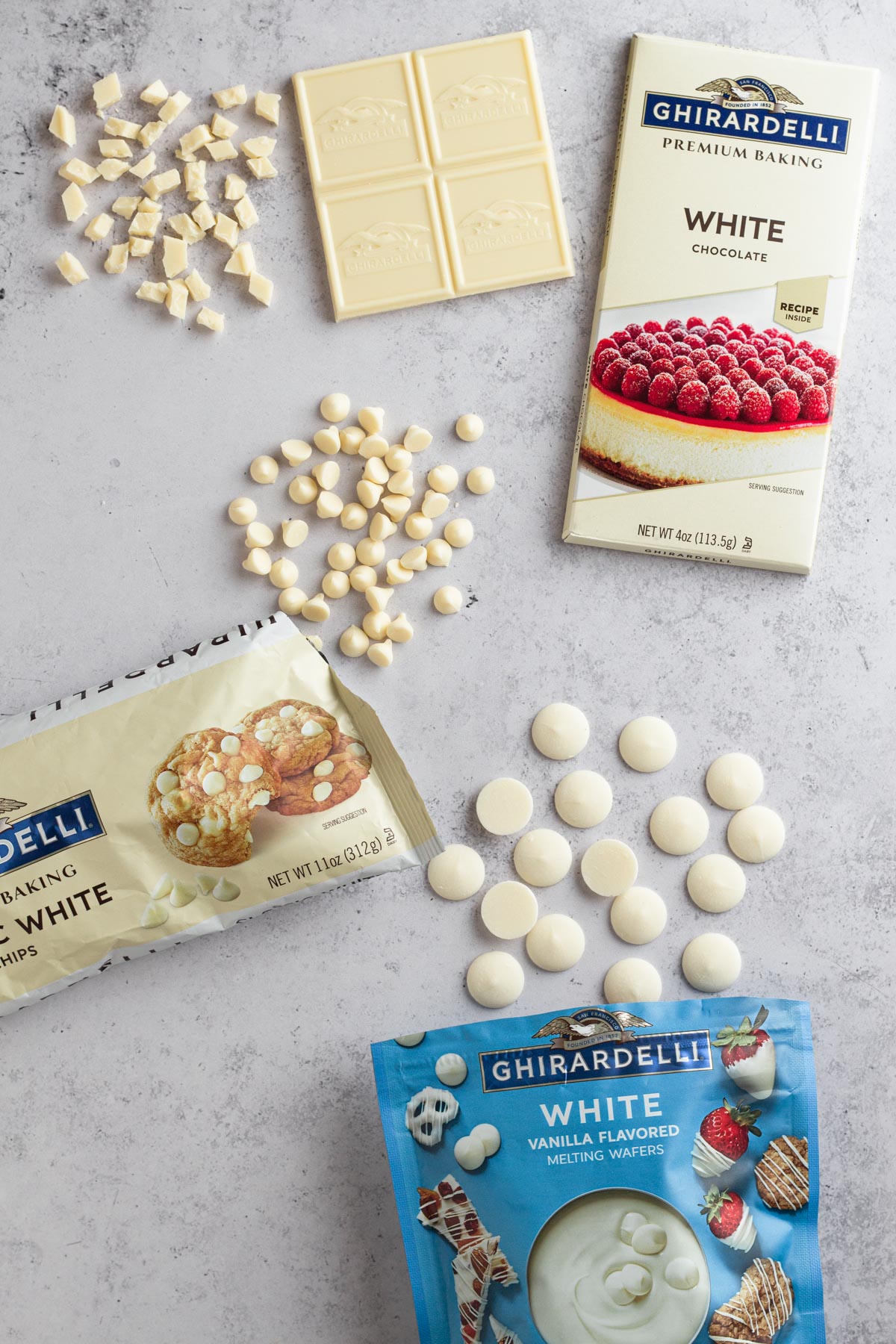
True white chocolate is a chocolate confection made with cocoa butter, milk solids, and sugar. It has a creamy white color and a sweet flavor with hints of butter and milk. Because it does not contain cocoa nibs or cocoa solids, it doesn't have the same color or flavor as other types of chocolate, like dark or semi-sweet.
Best White Chocolate for Melting & Dipping
Note that most "white chocolate" on the market is not actually white chocolate. White chocolate must contain at least 20 percent cocoa butter, and most white chips or wafers don't contain any cocoa butter at all.
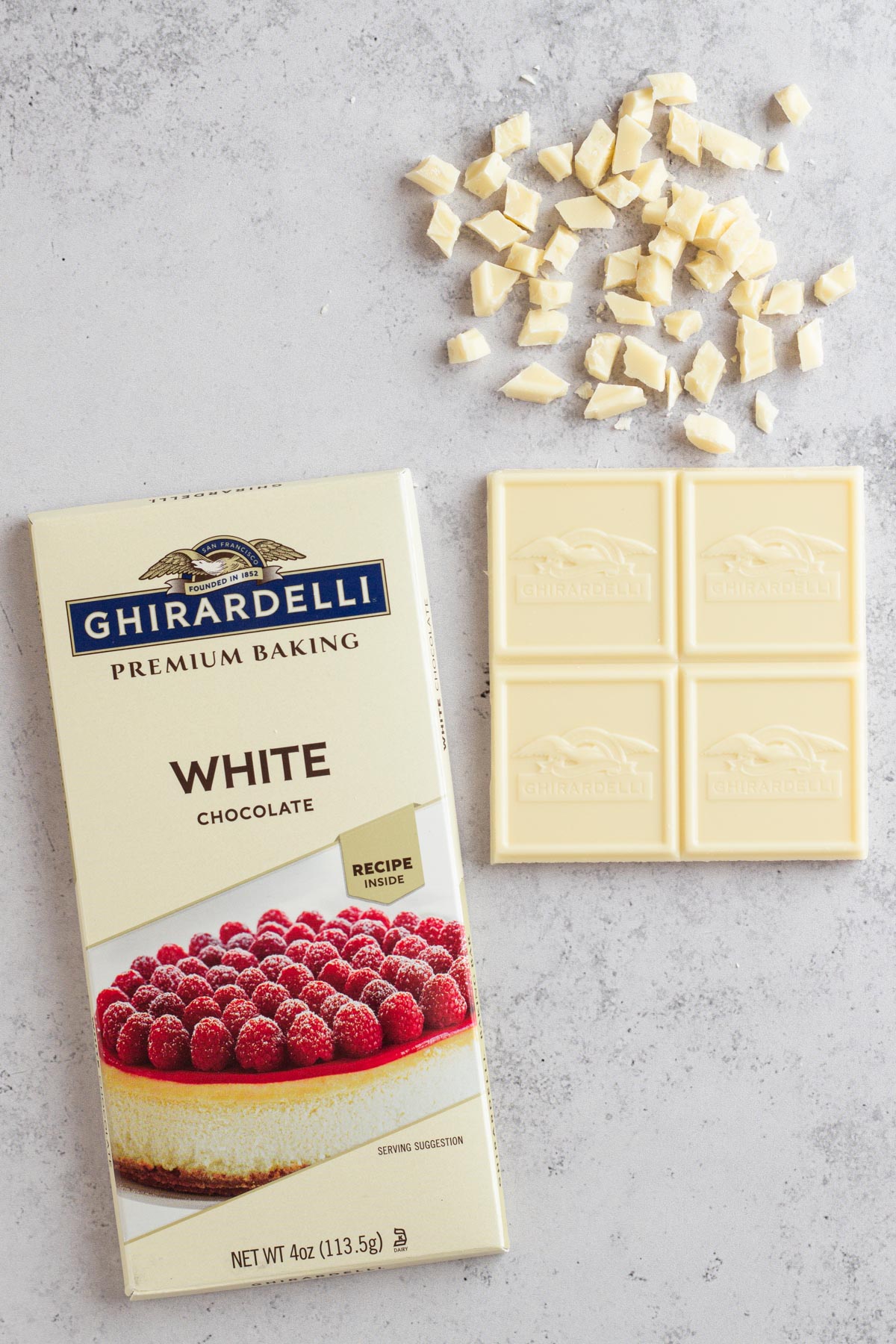
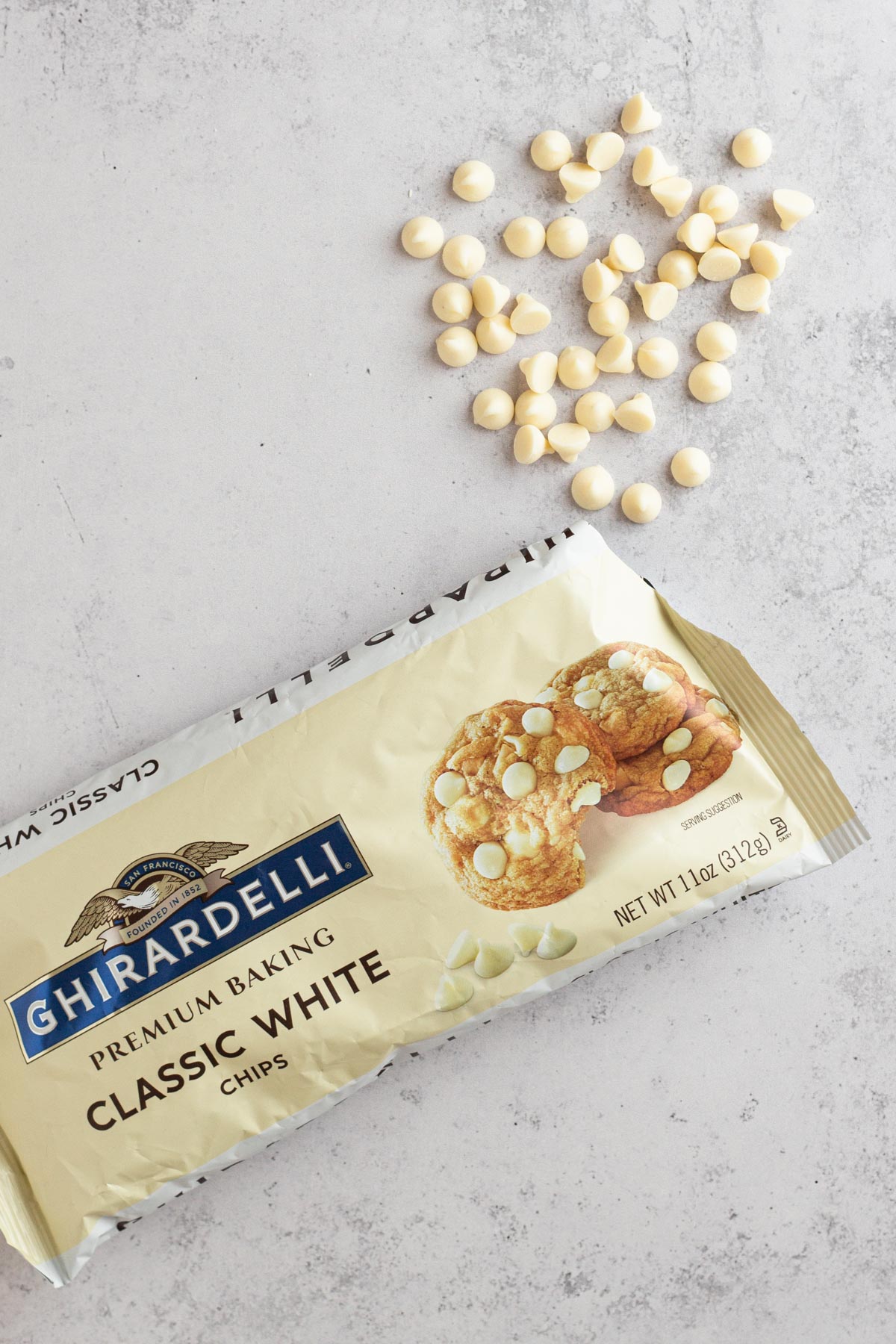
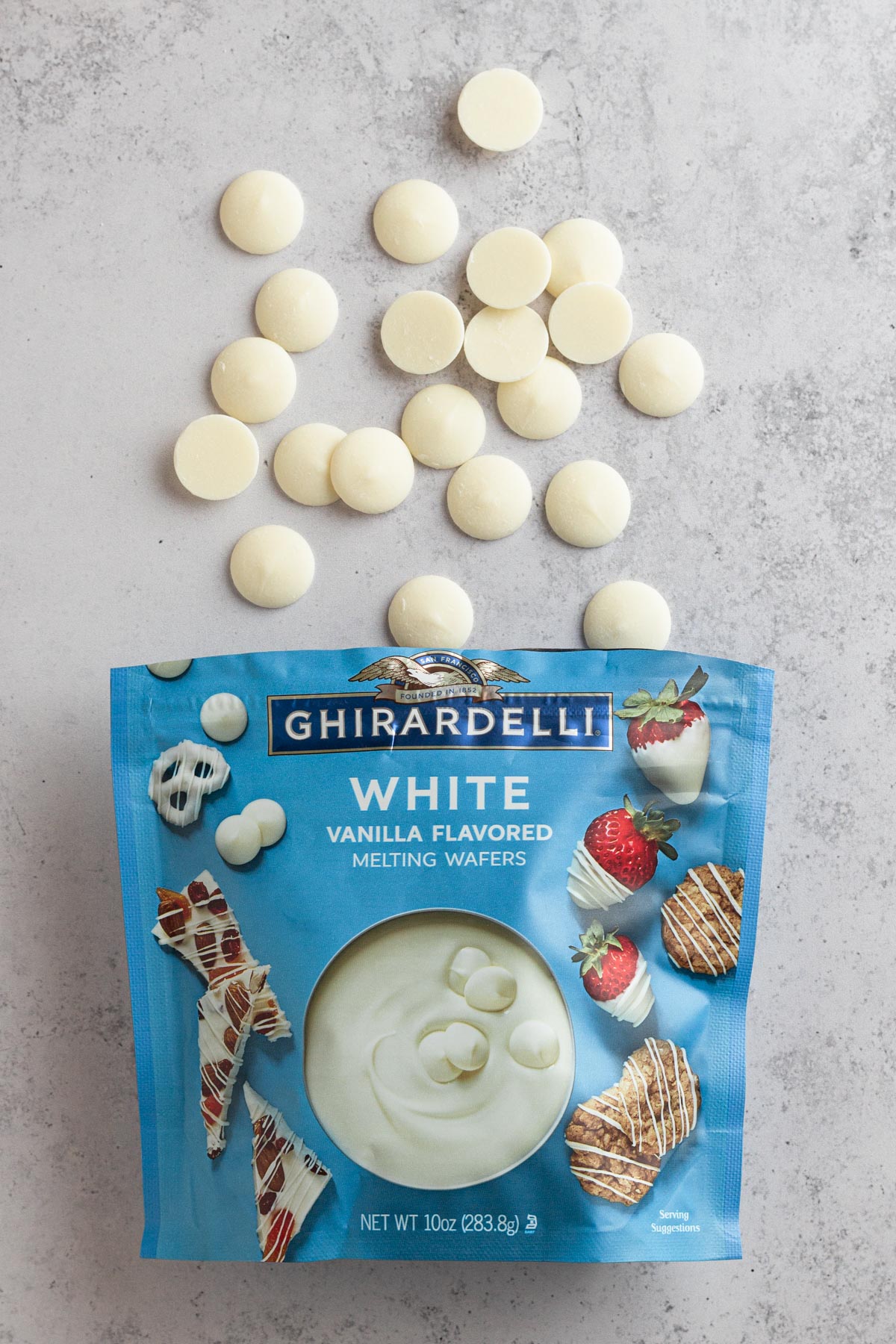
See in the photo above how the products that are not true white chocolate are labeled as "white chips" or "white melting wafers"? Sneaky, right?! You may not realize that what you're buying isn't real white chocolate.
If you want to be sure you're buying real white chocolate, be sure it's labeled as white chocolate and check the ingredients to confirm it includes cocoa butter. Real white chocolate is most commonly found in bar form. Otherwise, know that white chips, like chocolate chips, contain stabilizers to help the chips hold their shape. White melting wafers contain oil to help them melt smoothly.
While chips are great for cookies, they're more difficult to melt than other types of white chocolate. It can be more challenging to melt chips smoothly, and they re-harden quickly when melted. For these reasons, I don't recommend white chips for melting. Can you melt them anyway? Sure! Just know that they are not as easy to melt and don't yield as good of a result as the other options available.
If you want the real deal, a white chocolate baking bar is your best option because, using the methods outlined here, it will melt into a lusciously smooth mixture that remains liquid for some time so that you can dip, drizzle, etc.
White melting wafers are a great option if you don't mind that they're not truly white chocolate. Quality melting wafers will have a nice vanilla flavor, and they melt quickly and easily thanks to the added oils.
Equipment & Ingredients
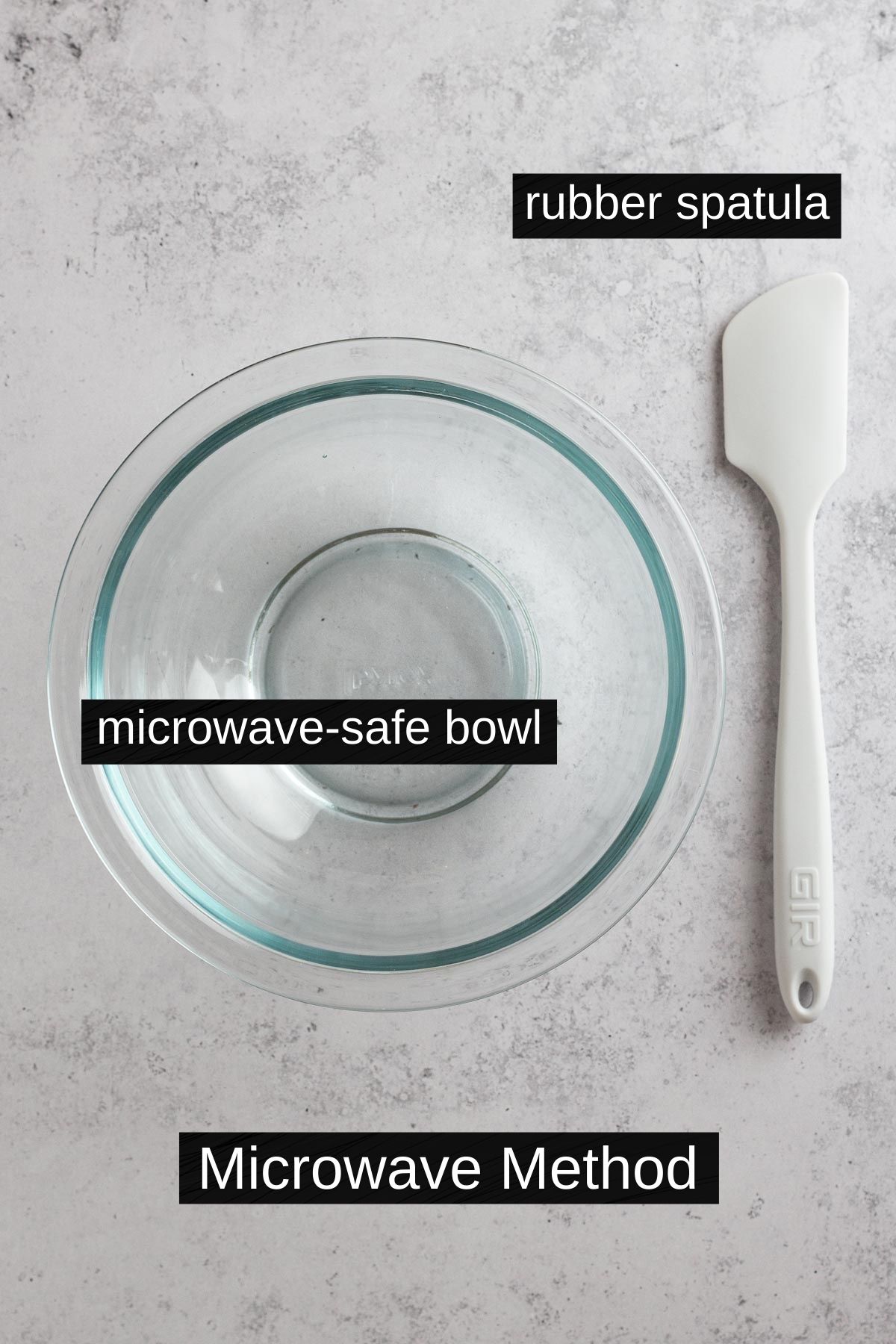
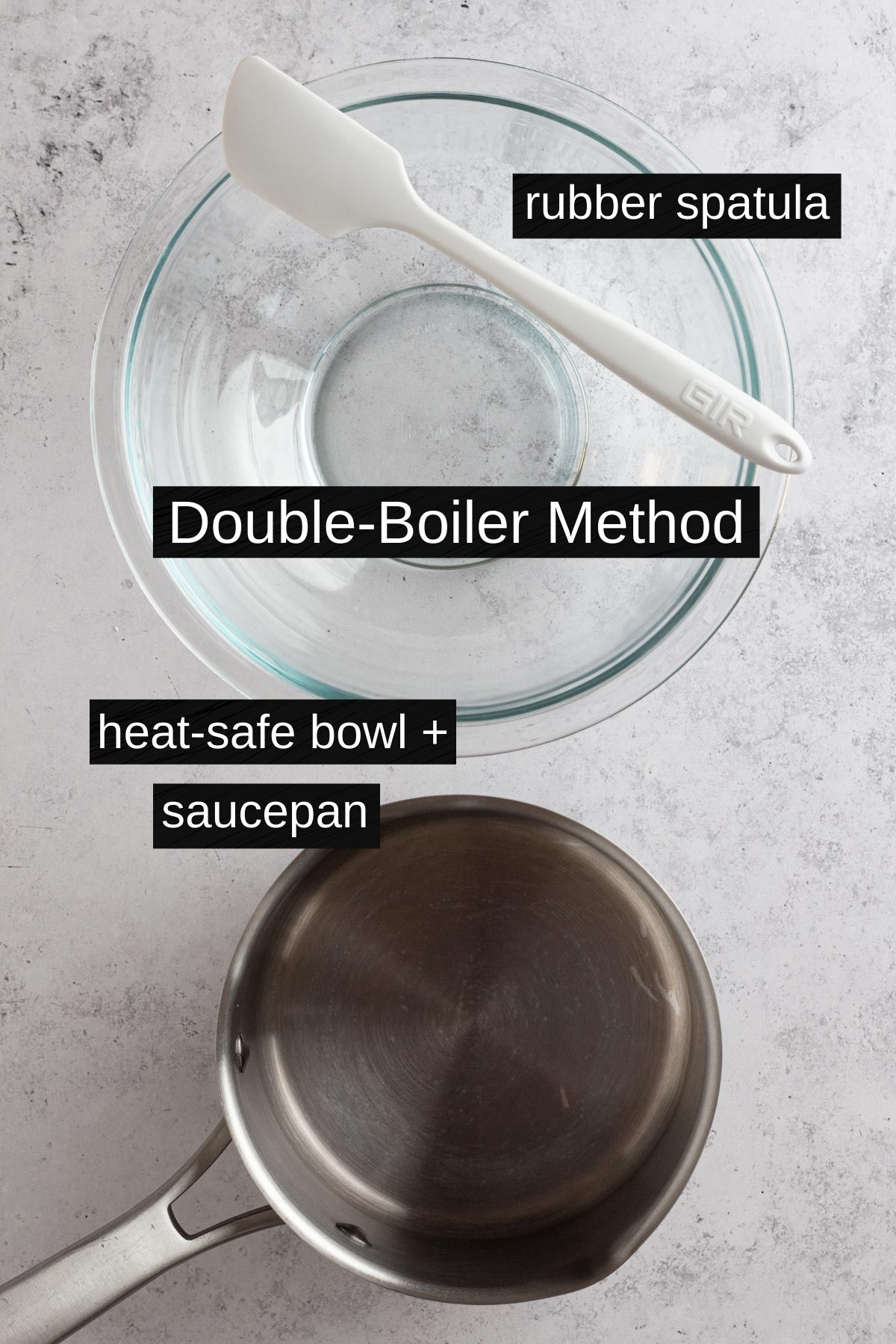
Microwave-Safe Bowl or Double Boiler - If you want to melt the white chocolate in the microwave, all you'll need is a microwave-safe bowl. If you opt for the double-boiler method, you'll need a double boiler, which can be purchased or you can DIY a double boiler using kitchen tools you already own.
Rubber Spatula - A rubber spatula is used to stir the white chocolate as it melts.
White Chocolate - Use a chopped chocolate baking bar, chocolate chips, or chocolate wafers... the choice is yours! Be sure to read the section above to help you decide which type is best for your needs.
Water (if using a double boiler)- Water is heated to create steam, which is used to warm and melt the chocolate.
Cutting Board & Serrated Knife - If you're melting a white chocolate bar, use a serrated knife and cutting board to chop the bar into small, even pieces before melting.
Step-By-Step Recipe Instructions
Microwave Method
- Add chocolate to a microwave safe bowl.
- Place the bowl in the microwave and heat at 50% power for 30 seconds.
- Remove the bowl from the microwave and stir the chocolate using a rubber spatula.
- If needed, return the bowl to the microwave and continue to heat the chocolate at 50% power in 15 to 30 second increments, stirring between each, until the chocolate is melted and smooth.
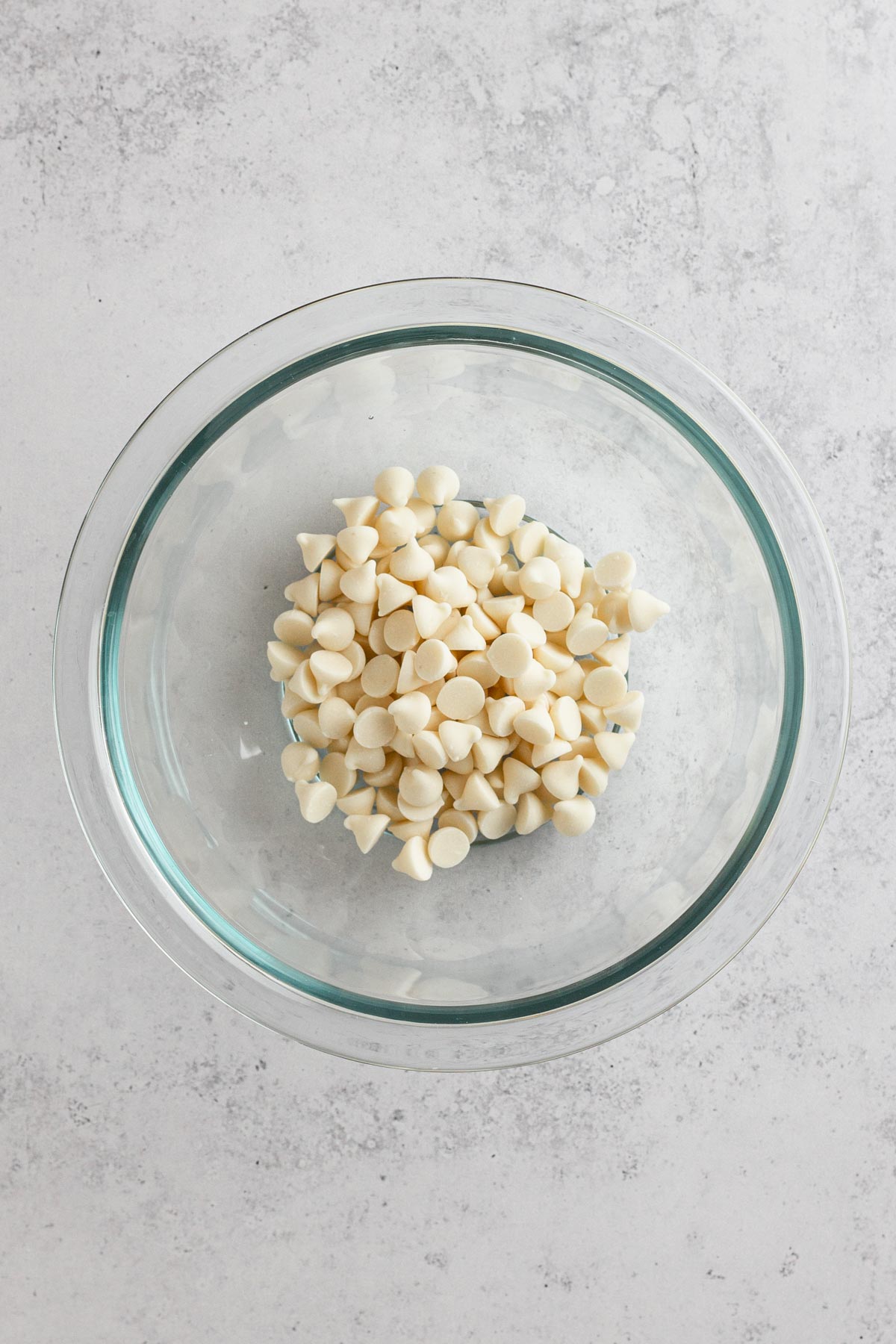
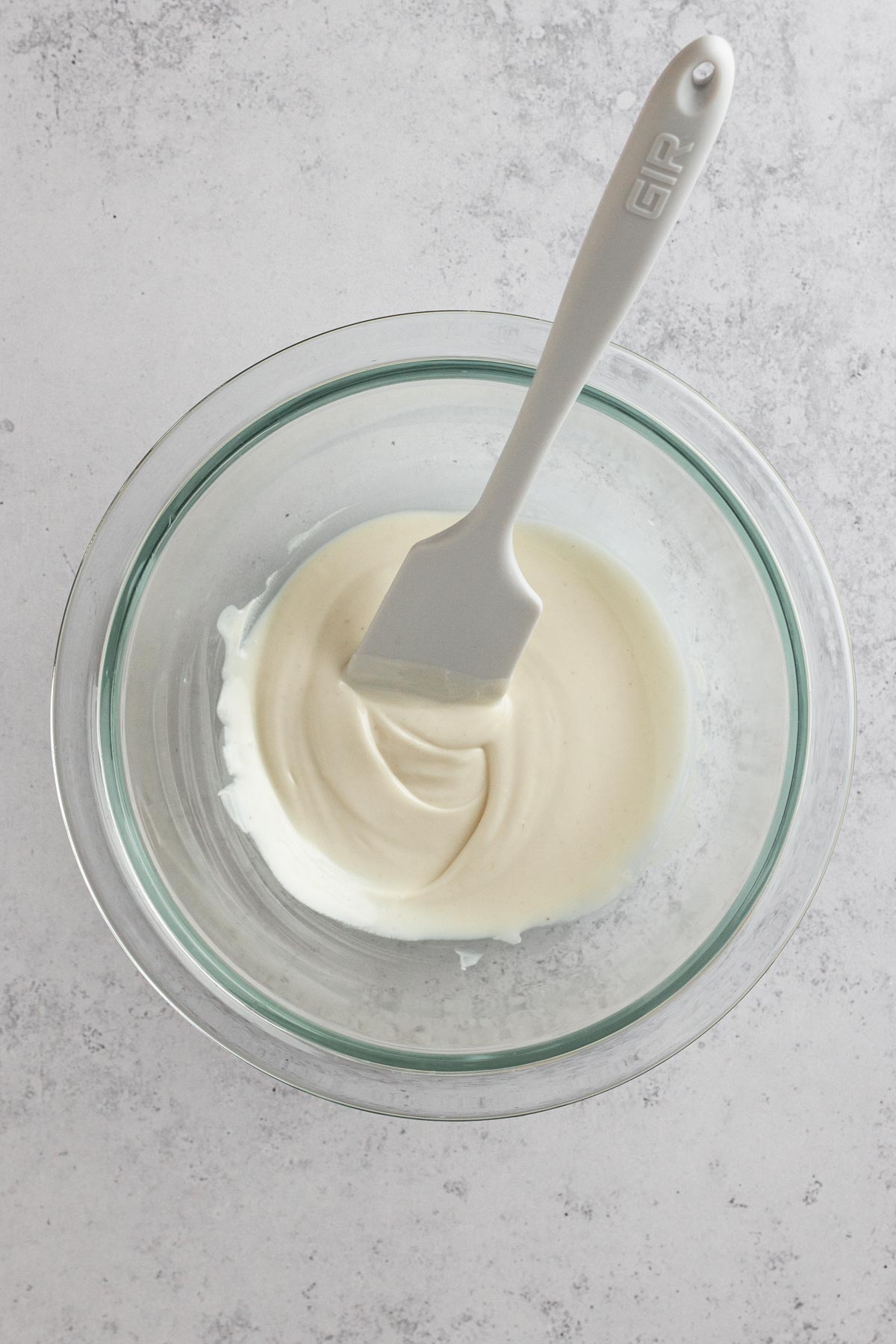
Double Boiler Method (on Stove)
- Place a saucepan on the stove and add 1-2 inches of water to the pan.
- Place a dry, shallow, heat-safe mixing bowl over the saucepan.
- The mixing bowl should fit over the pan so that the outer edge of the bowl touches the upper edges of the saucepan (to create a "seal" that will trap steam within the saucepan).
- Check to make sure the water in the pan isn't touching the bottom of the bowl by lifting the bowl up and checking the bottom to be sure it's dry before replacing the bowl in the pan.
- Add chocolate to the mixing bowl.
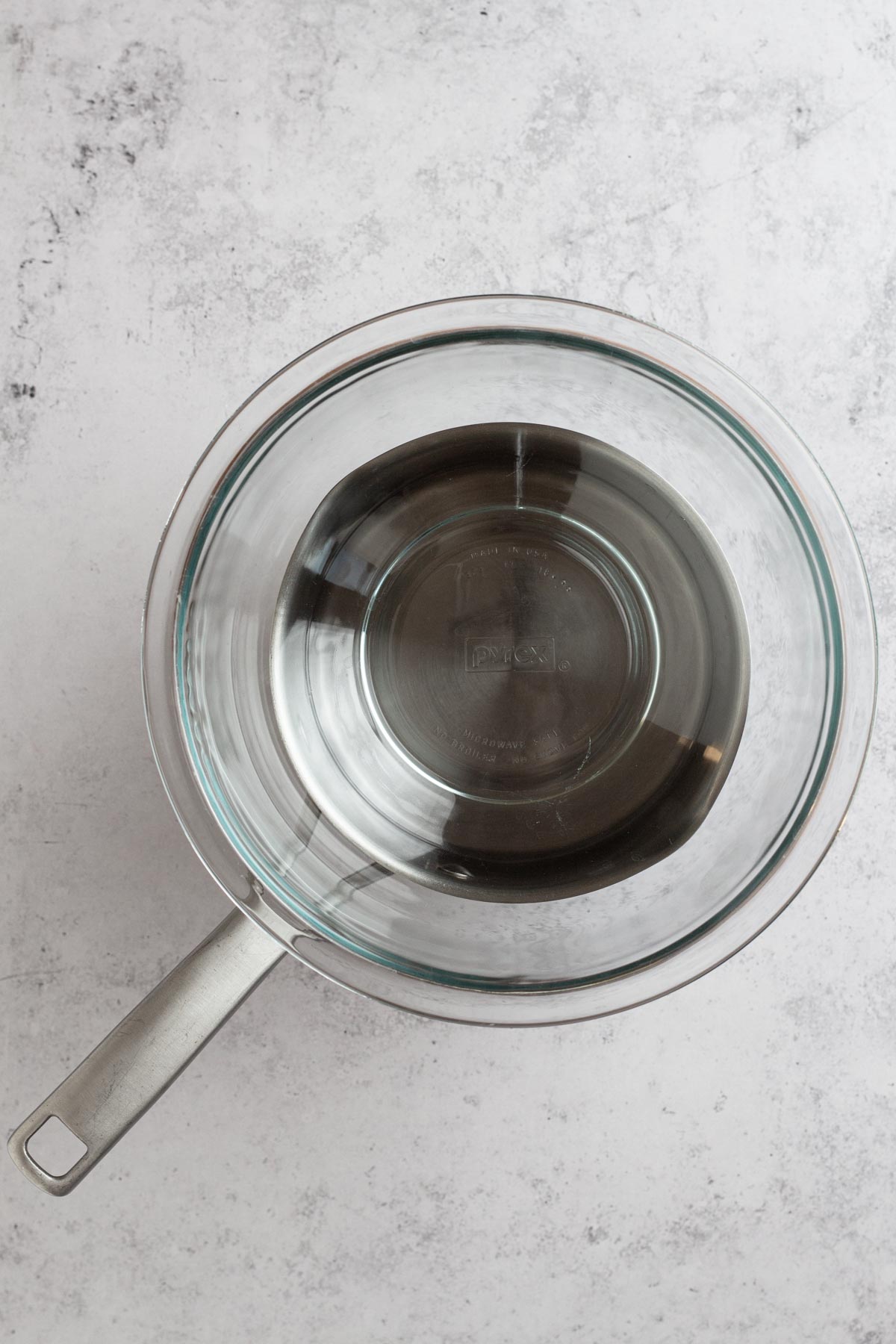
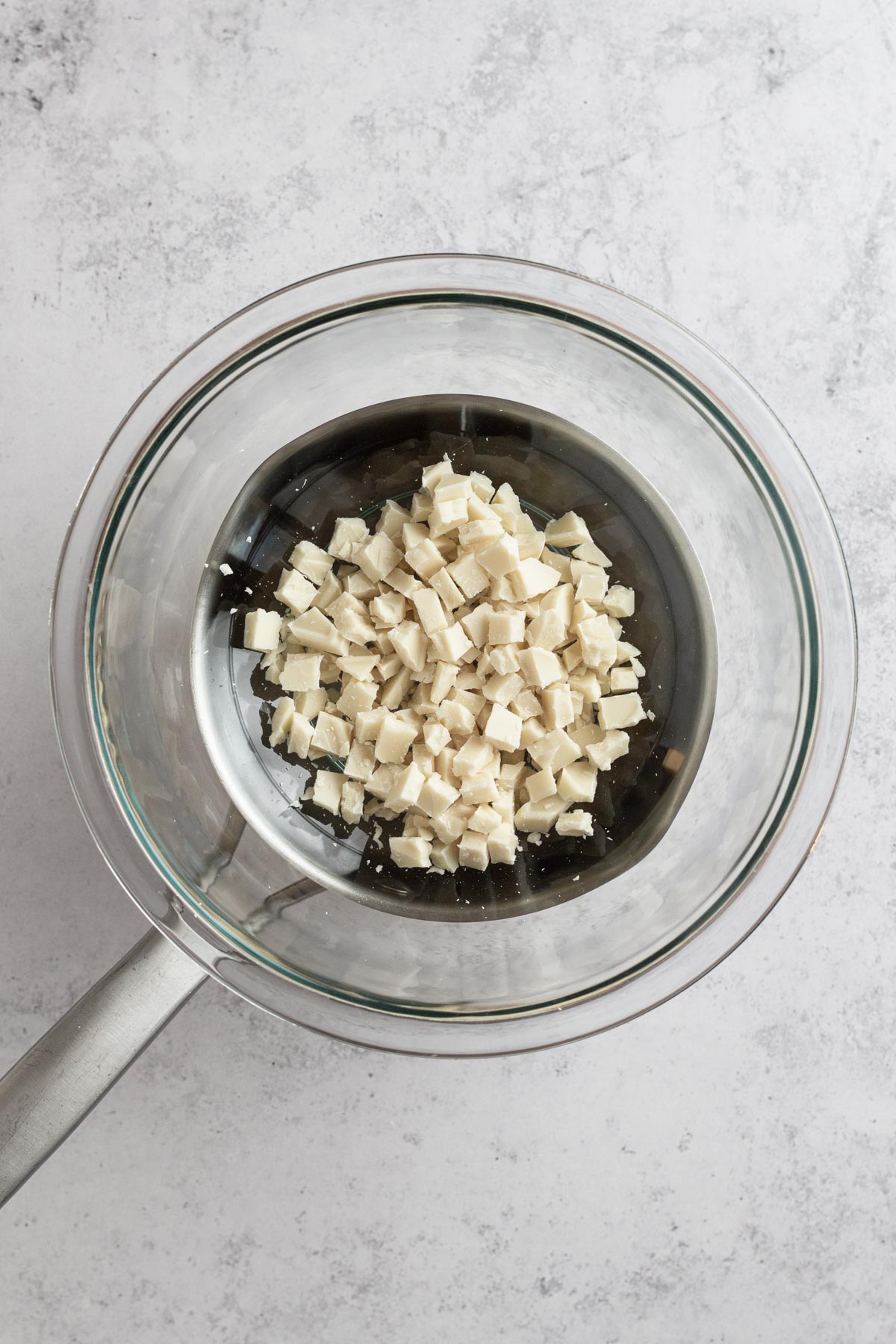
- Turn on the stove to medium heat. As the water begins to simmer and release steam, the steam will heat the chocolate and it will begin to melt. As the chocolate melts, keep stirring with a heat-safe rubber spatula until it is completely melted.
- Use the melted chocolate to dip or drizzle, or add it to a recipe. If dipping or drizzling, let the chocolate cool and harden before packing up your treats to store them.
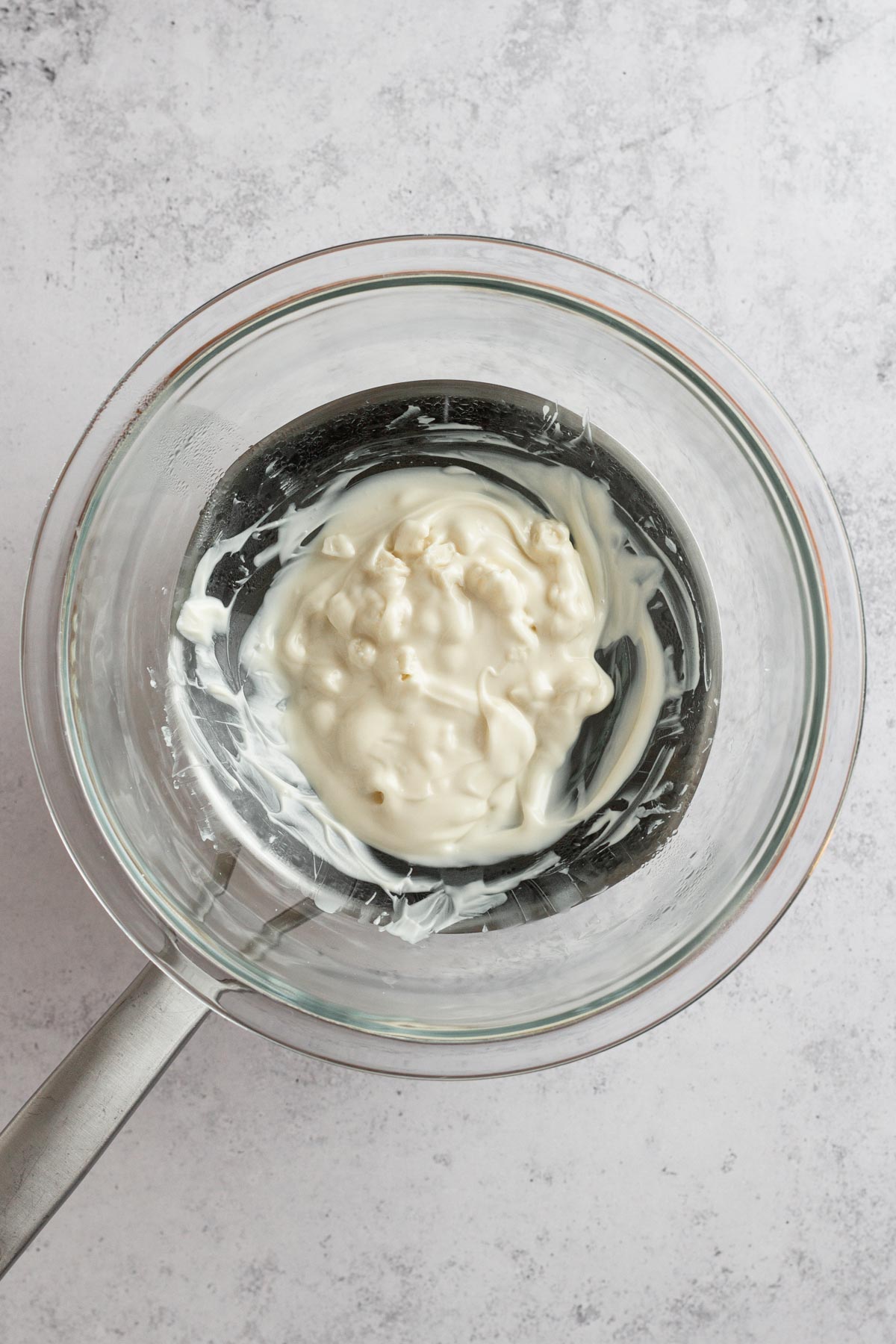
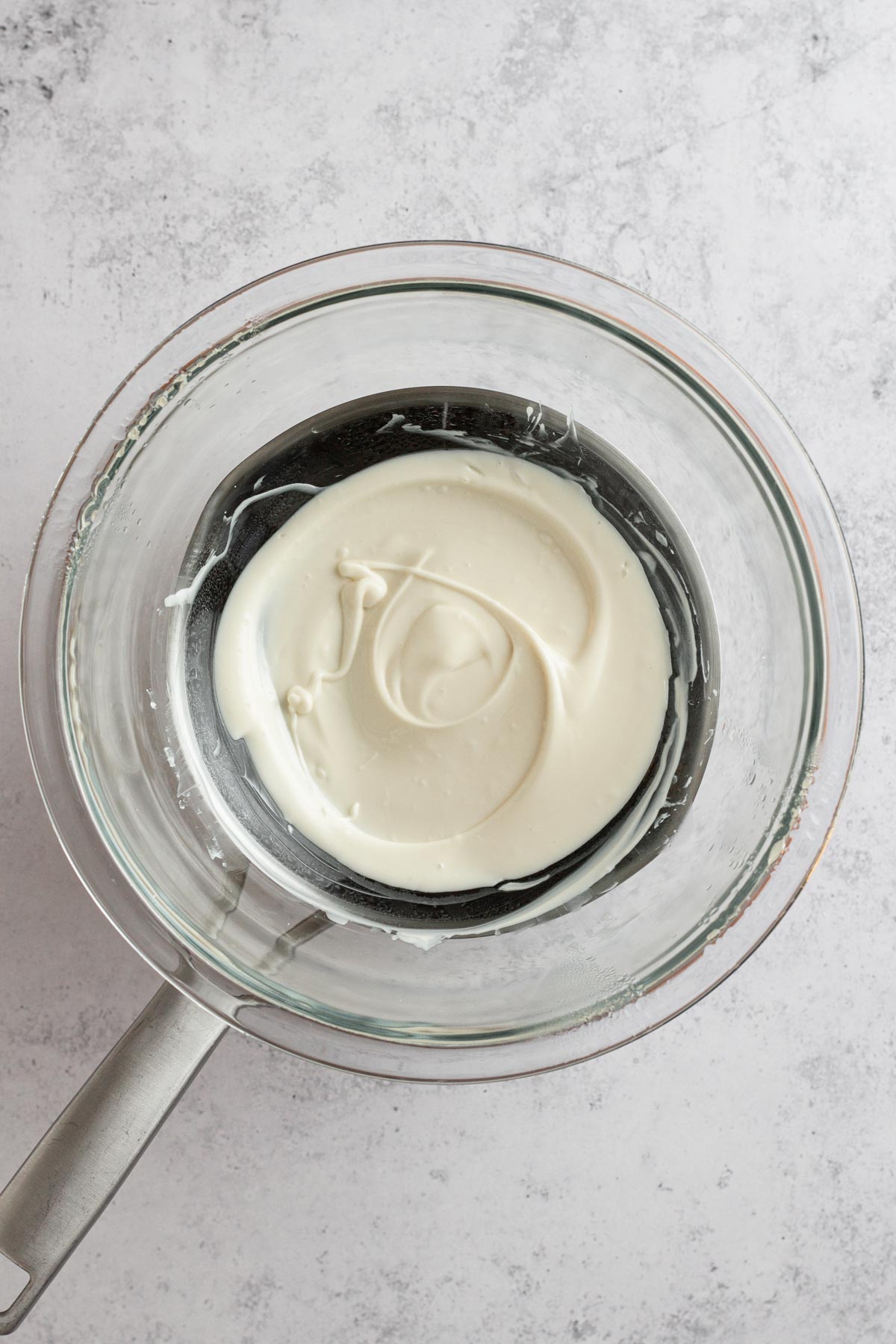
Tips & Tricks
Use a serrated knife to more easily chop bars of white chocolate.
Be careful not to let any water come in contact with the white chocolate. Water causes chocolate to seize, causing it to become thick and lumpy. Even a drop of water can destroy your chocolate, so be sure to use a bowl and spatula that are completely dry.
FAQs
Some types of white chocolate - particularly white chips - can be more difficult to melt than other types of chocolate since they are a confection rather than true white chocolate. Pay attention to ingredients when selecting a white chocolate to melt. Real white chocolate (products labeled as white chocolate containing cocoa butter) and white melting wafers (products containing oil that are designed to melt easily) will be the easiest to melt into a smooth texture. And with all types of white chocolate, patiently melting with low heat is the best bet to avoid overheating the chocolate.
Just like with other types of chocolate, if white chocolate comes into contact with water it will seize. Even a small drop of water or a bit of steam touching the chocolate will cause it to become thick and grainy, and it will not melt. Be sure your bowl, spatula, and any other tools are completely dry when melting chocolate to avoid seizing.
If your white chocolate becomes clumpy when melted, there are two likely culprits. First, some white "chocolate" products - like low quality white chips - contain so much stabilizers that it's nearly impossible to melt them to a smooth consistency. They are much more likely than real white chocolate or white melting wafers to melt unevenly and to re-harden quickly after melting. Second, white chocolate will burn if overheated, which will cause the chocolate to clump.
A small amount of oil (like vegetable or canola oil) or butter can be added to the white chocolate as it's melting. The oil or butter will help to thin the melting chocolate, creating a perfect consistency for dipping or drizzling. I recommend using 2 teaspoons of oil or butter for every 8 ounces of chocolate. This is especially helpful when melting white chips, since the added oil or butter helps to give the "chocolate" a glossy sheen, but I find that it's not necessary when melting real white chocolate bars or white melting wafers.
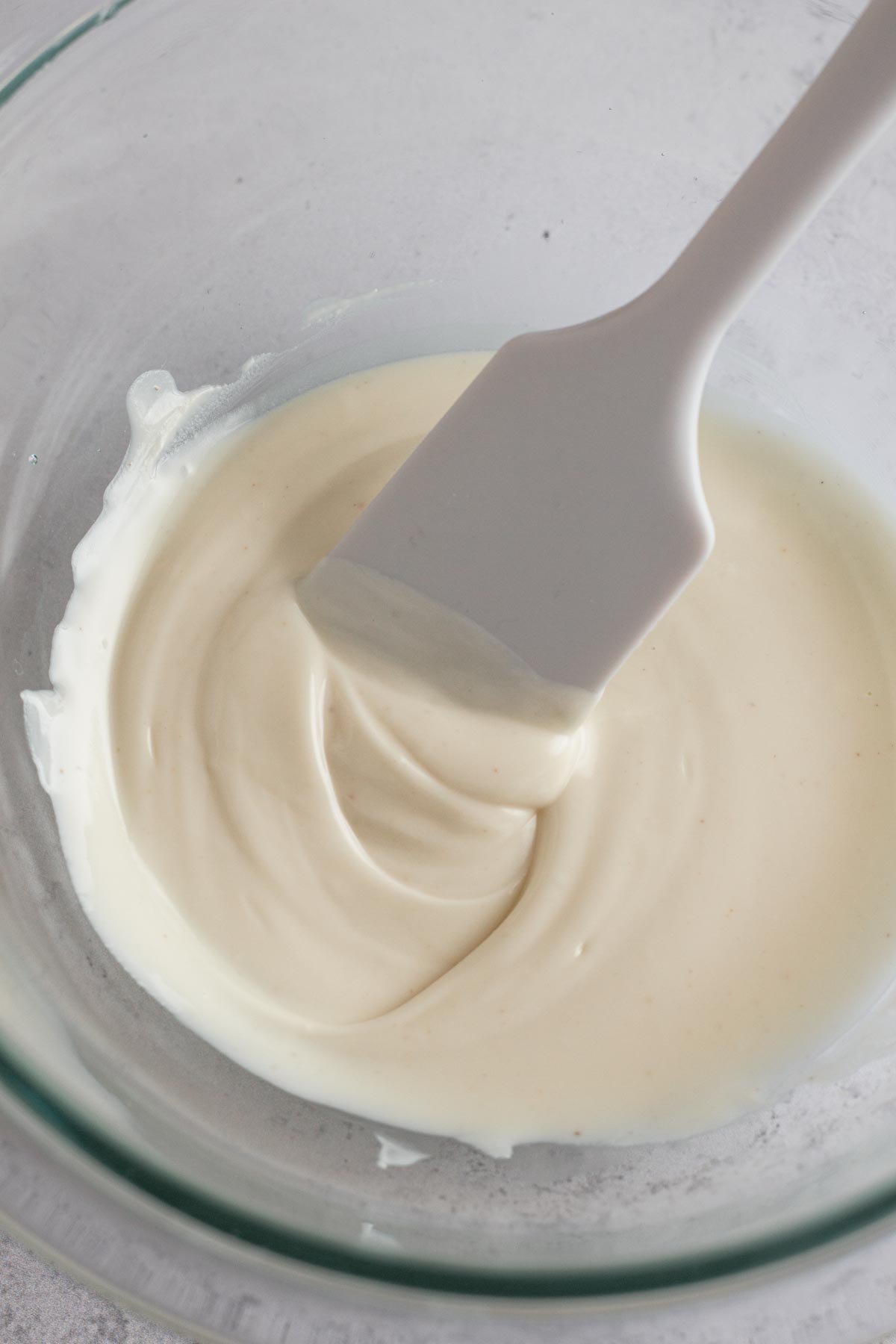
Uses for Melted White Chocolate
There are so many ways to use melted white chocolate, including:
- Dipping fruit, like chocolate covered strawberries
- Dipping marshmallows
- Dipping treats, like Oreos or pretzels
- Drizzling over pound cake
- Drizzling over cookies
- Decorating cakes
- And more!
More Baking Tips
Love this baking tutorial? Please leave a star rating and check out these other great baking tips linked above! And don't forget to subscribe to Always Eat Dessert for even more baking tips and simple dessert recipes.
Recipe
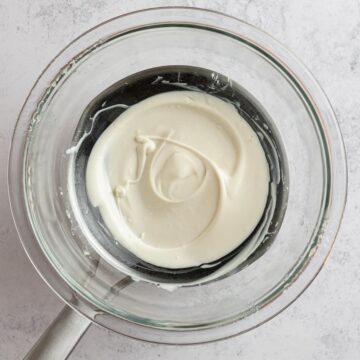
How to Melt White Chocolate
Special Equipment
- 1 microwave-safe bowl (if using microwave method)
- 1 double boiler (saucepan + heat-safe bowl, if using double boiler method)
- 1 rubber spatula
- 1 cutting board (if chopping chocolate)
- 1 serrated knife (if chopping chocolate)
Ingredients
- water (if using double boiler)
- 4 ounces white chocolate (chopped chocolate baking bar, chocolate chips, or chocolate melting wafers) Use whatever amount you wish to melt.
Instructions
Microwave Method
- Add chocolate to a microwave safe bowl.
- Place the bowl in the microwave and heat at 50% power for 30 seconds.
- Remove the bowl from the microwave and stir the chocolate using a rubber spatula.
- If needed, return the bowl to the microwave and continue to heat the chocolate at 50% power in 15 to 30 second increments, stirring between each, until the chocolate is melted and smooth.
Double Boiler Method
- Place a saucepan on the stove and add 1-2 inches of water to the pan.
- Place a dry, shallow, heat-safe mixing bowl over the saucepan.
- Add white chocolate to the mixing bowl.
- Turn on the stove to medium heat. As the water begins to simmer and release steam, the steam will heat the chocolate and the chocolate will begin to melt. As the chocolate melts, keep stirring with a heat-safe rubber spatula until all of the chocolate has melted.
Using Melted White Chocolate
- Use the melted chocolate to dip or drizzle, or add it to a recipe. If dipping or drizzling, let the chocolate cool and harden before packing up your treats to store them.


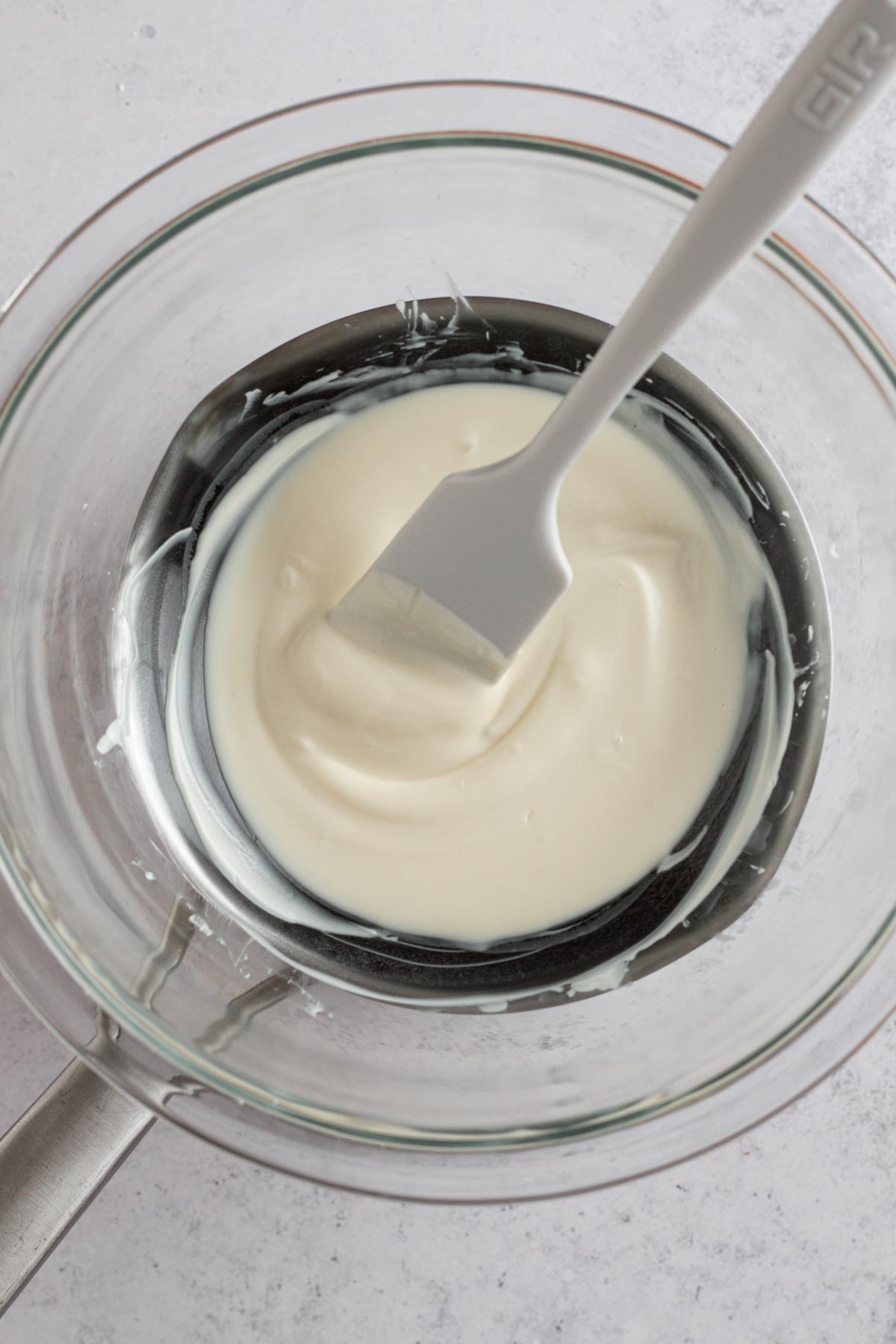
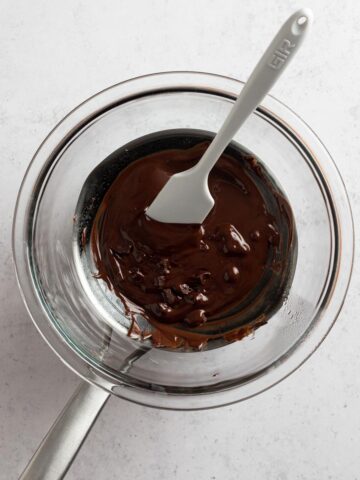
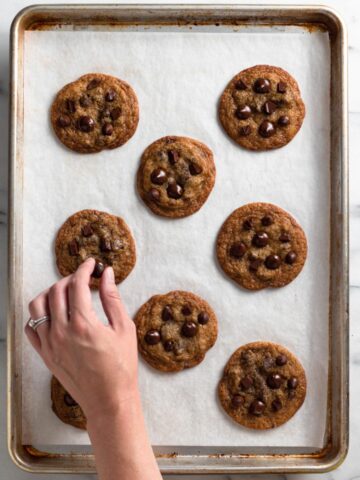
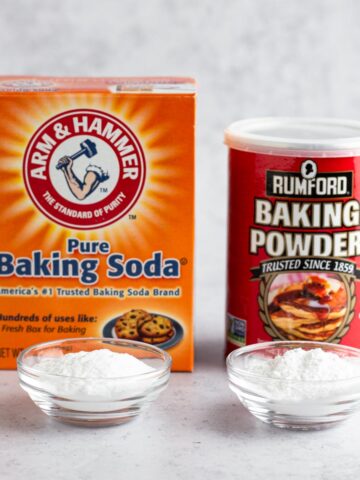
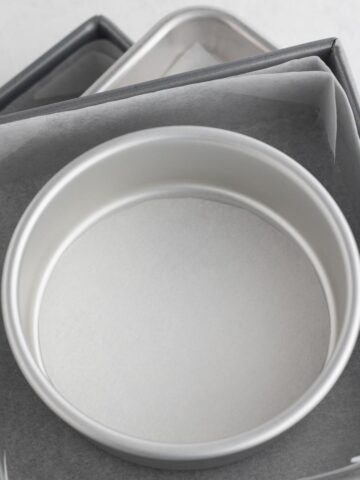
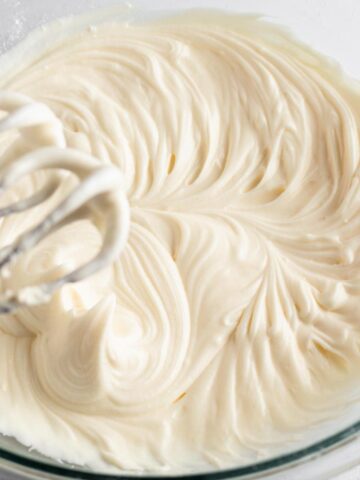
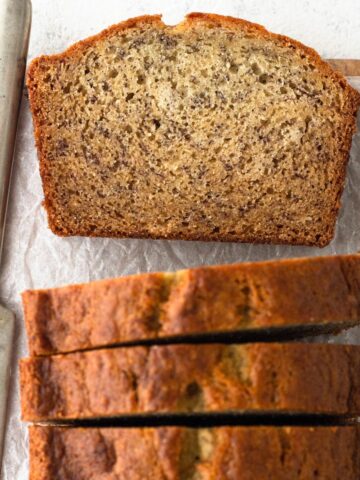
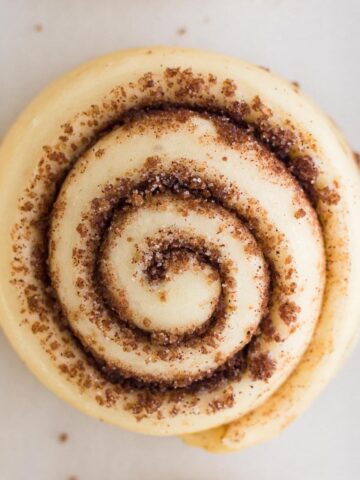
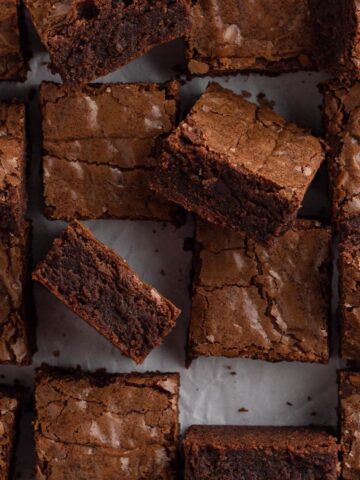
Jan
Hi, I’m a bit perplexed by this post. You mention white chocolate chips in the title (before bars!) and in the ingredients, but then also advise not to use chips if possible in the comments. White chocolate chips are all I have at home right now, and found this while searching for the best way to melt them. Perhaps you should reconsider if this is actually helpful for those in my situation.
Allison Ferraro
Hi Jan! My goal is to always provide recommendations that will give you the best outcome. Can you melt white chocolate chips using the melting methods outlined in this post? Absolutely! But - as I stated within the post - chips are simply more difficult to melt smoothly compared to a bar of white chocolate. So in addition to providing clear guidance on how to melt white chocolate, I believe that providing additional information about the best products to use and what to expect from the product you're using can be very helpful.
- Allison
Mary Jackson
Can white chocolate morsels be used instead of regular milk chocolate for candy using sweetened condensed milk?
Allison Ferraro
Hi Mary! I would imagine that they can, but it will really depend on the recipe. If you're having to melt the white chocolate, be especially careful as white chocolate morsels are more difficult than milk or other chocolate chips to melt (as I explain in this post).
- Allison
Jessica
If I add oil to thin the chocolate and make it shiny, will it re-harden like a shell after I coat cake pops with it?
Allison Ferraro
Hi Jessica! Yes, if you add just a small amount of neutral oil to the melted chocolate it will add a bit of shine while still allowing the chocolate to harden when it cools. I recommend adding 2 teaspoons of oil for every 8 ounces of chocolate.
- Allison
Dawn
I tried to melt some white chocolate chips in the microwave on z800 power and 30 second bursts and it just died up. So I added some butter but it's still not good. Is there anyway I can save it. I want to make a piped band to go around a dark chocolate cake so it will need to set. What can I do if snything
Allison Ferraro
Hi Dawn! Did the chips become dry and clumpy after microwaving? It sounds like even though you were careful with the microwave the chips still became overheated. I'm afraid that once this happens it's nearly impossible to fix them. As I mention in this post, I do not recommend white chocolate chips for melting since what you experienced is so common and really difficult to avoid. If you're planning to try again, I suggest checking out the "Best White Chocolate for Melting & Dipping" section in the post above to determine what you'd prefer to use (I recommend white wafers here). Melting using a double boiler will give you the best control, but a microwave (using 50% power in short bursts) can also be used. Good luck!
- Allison